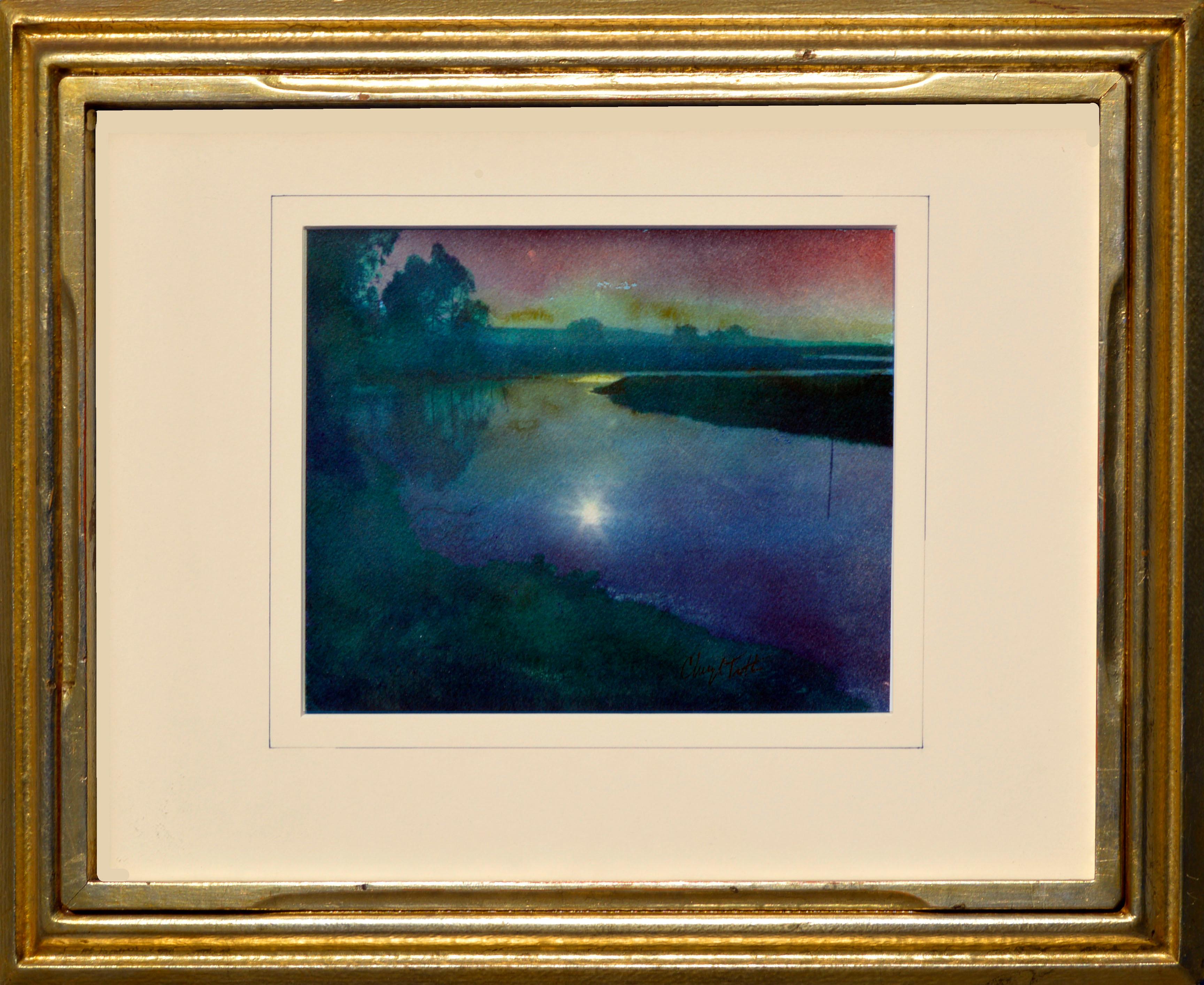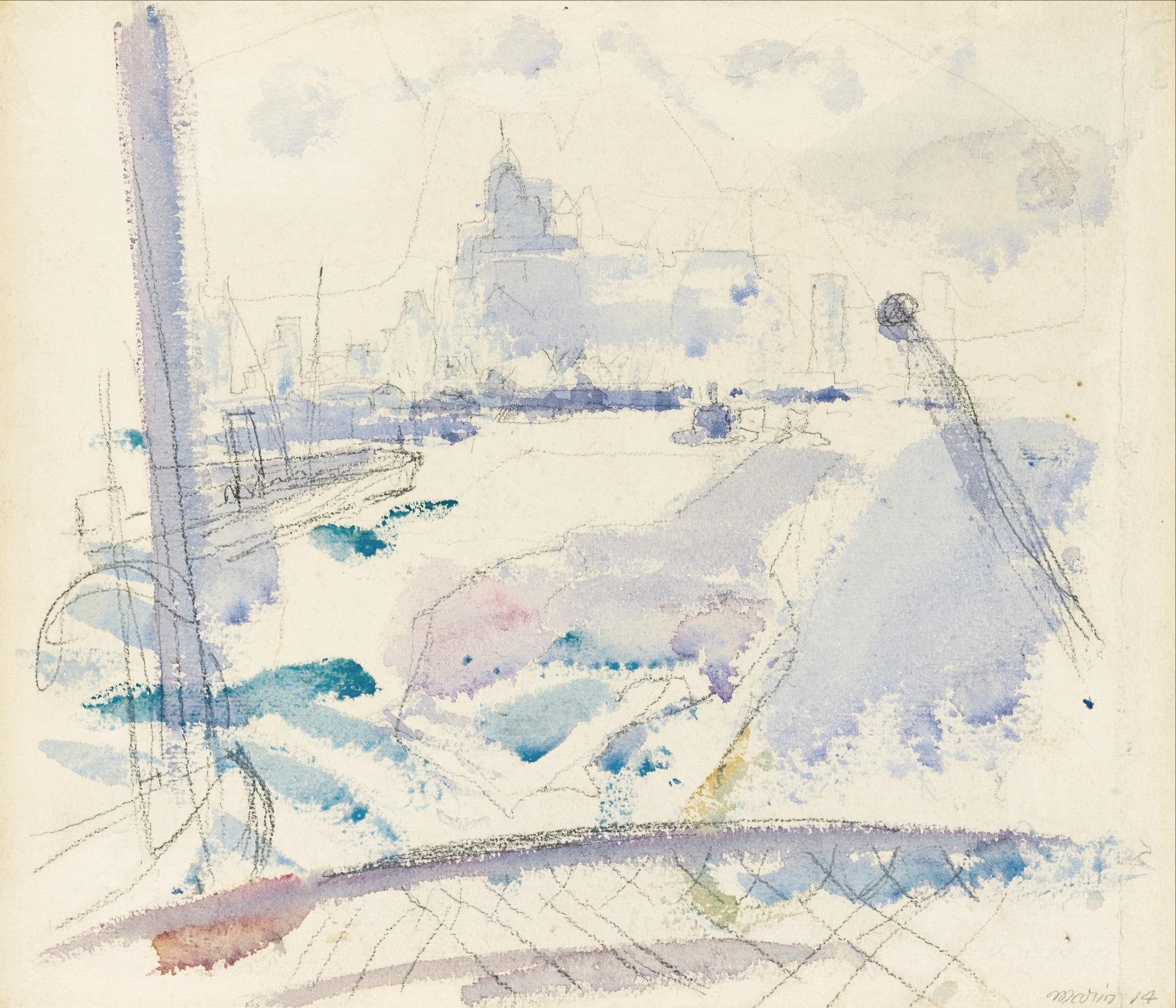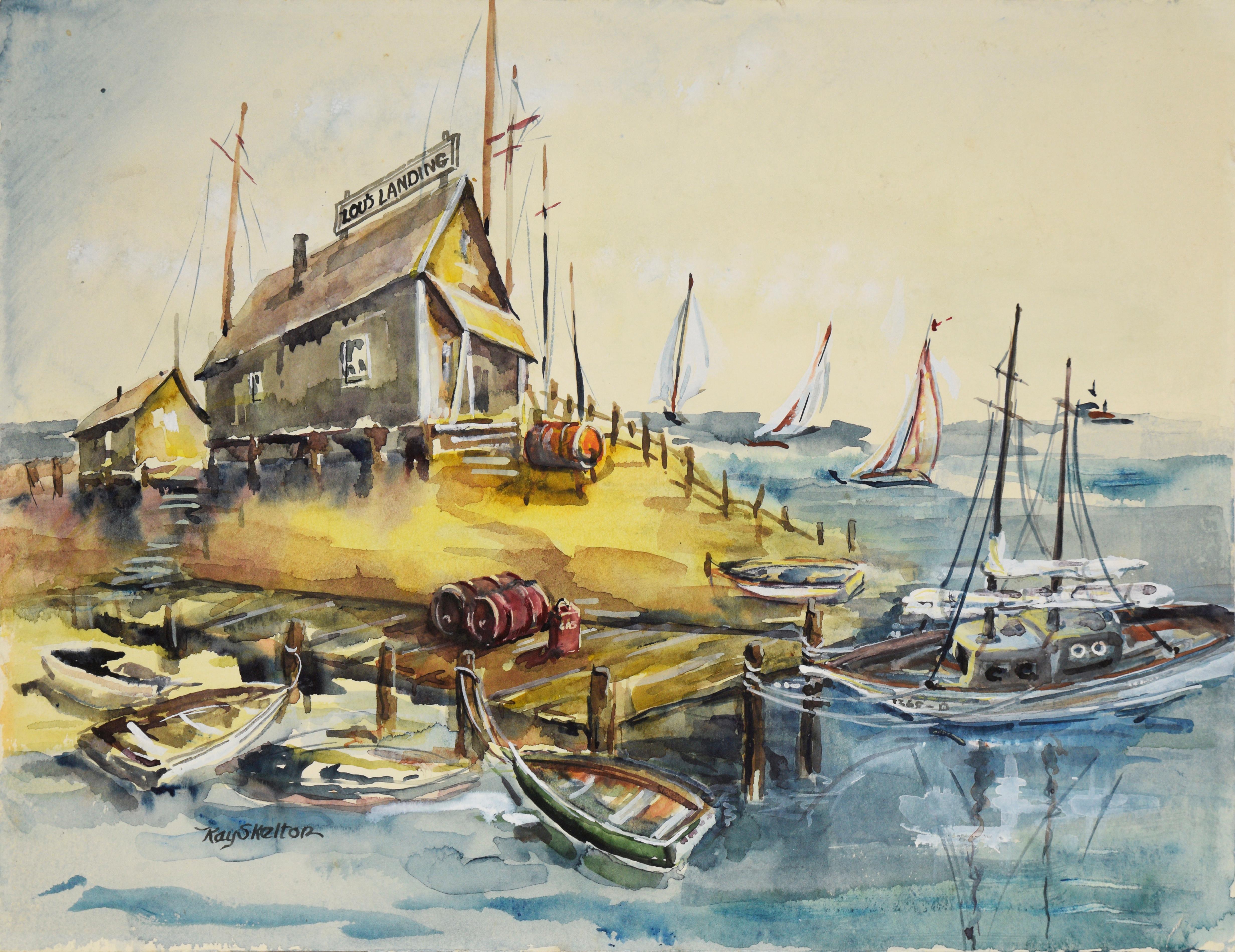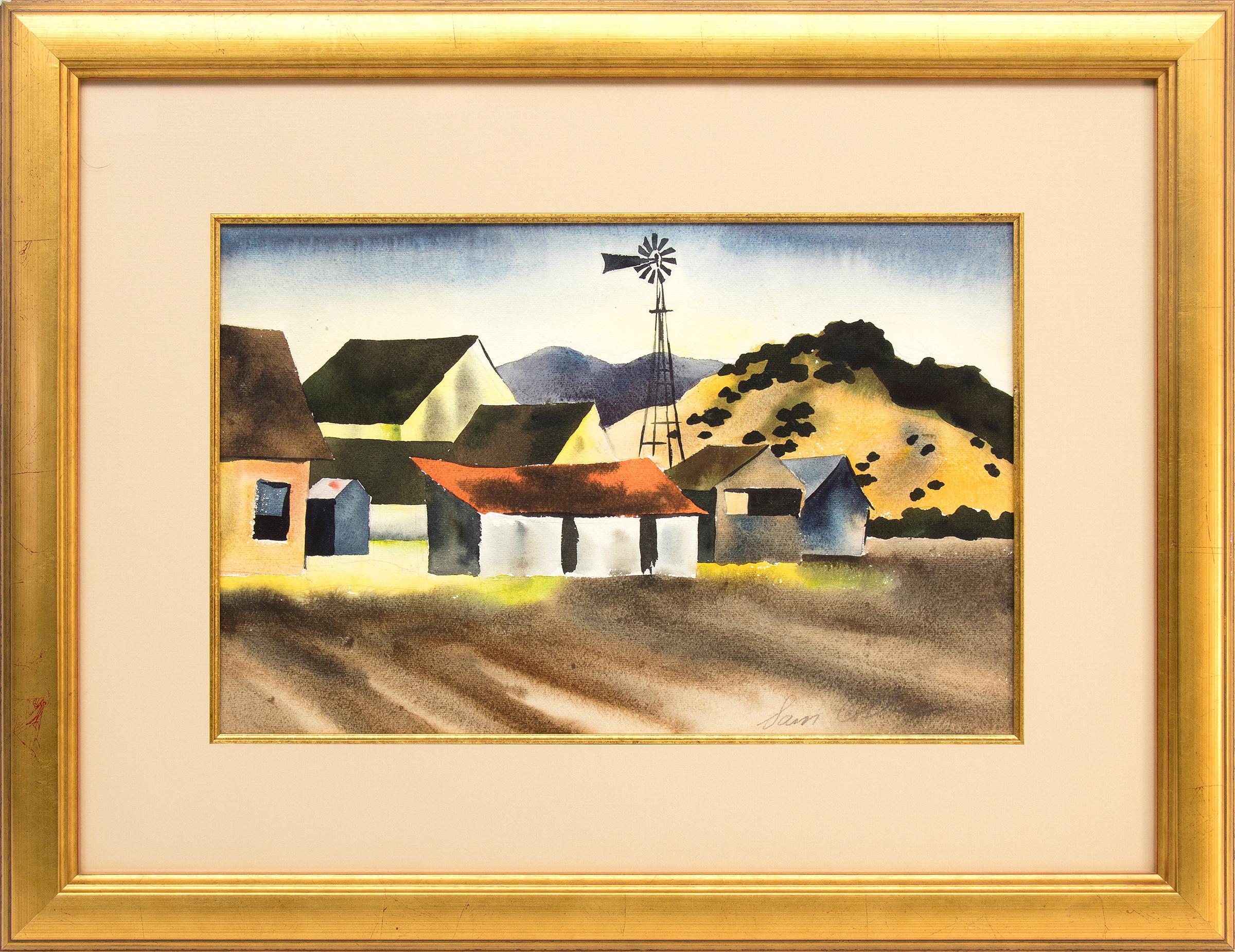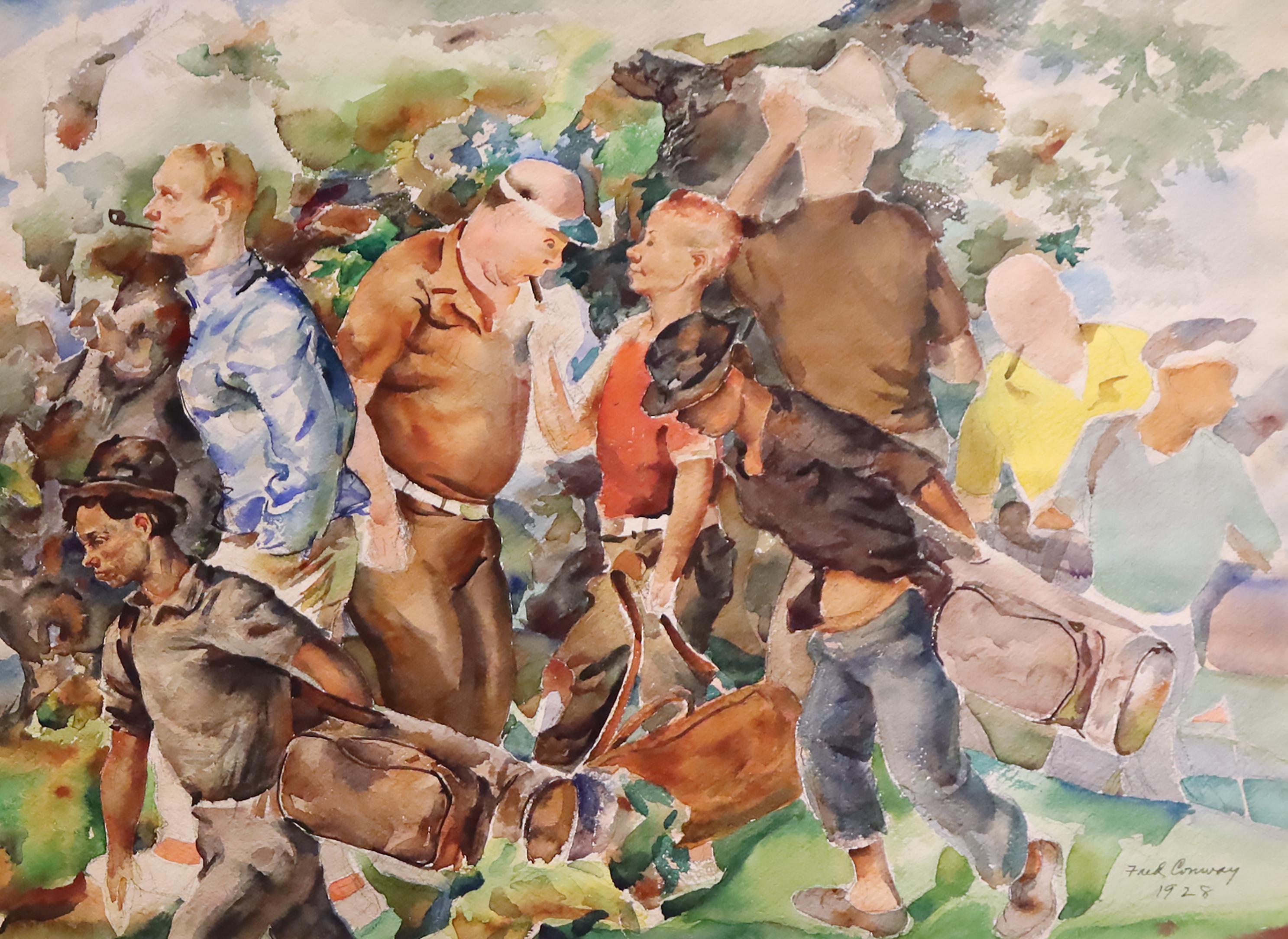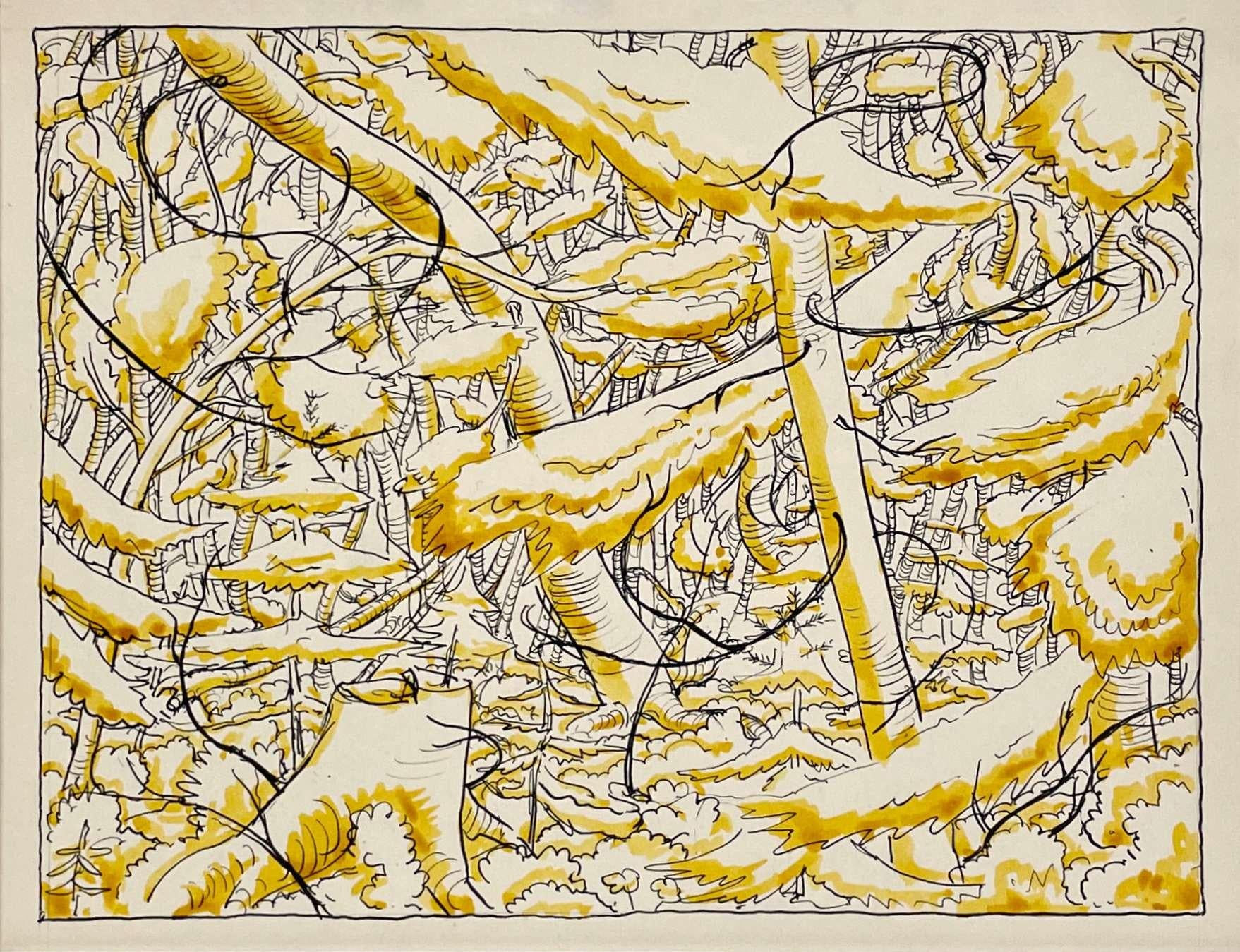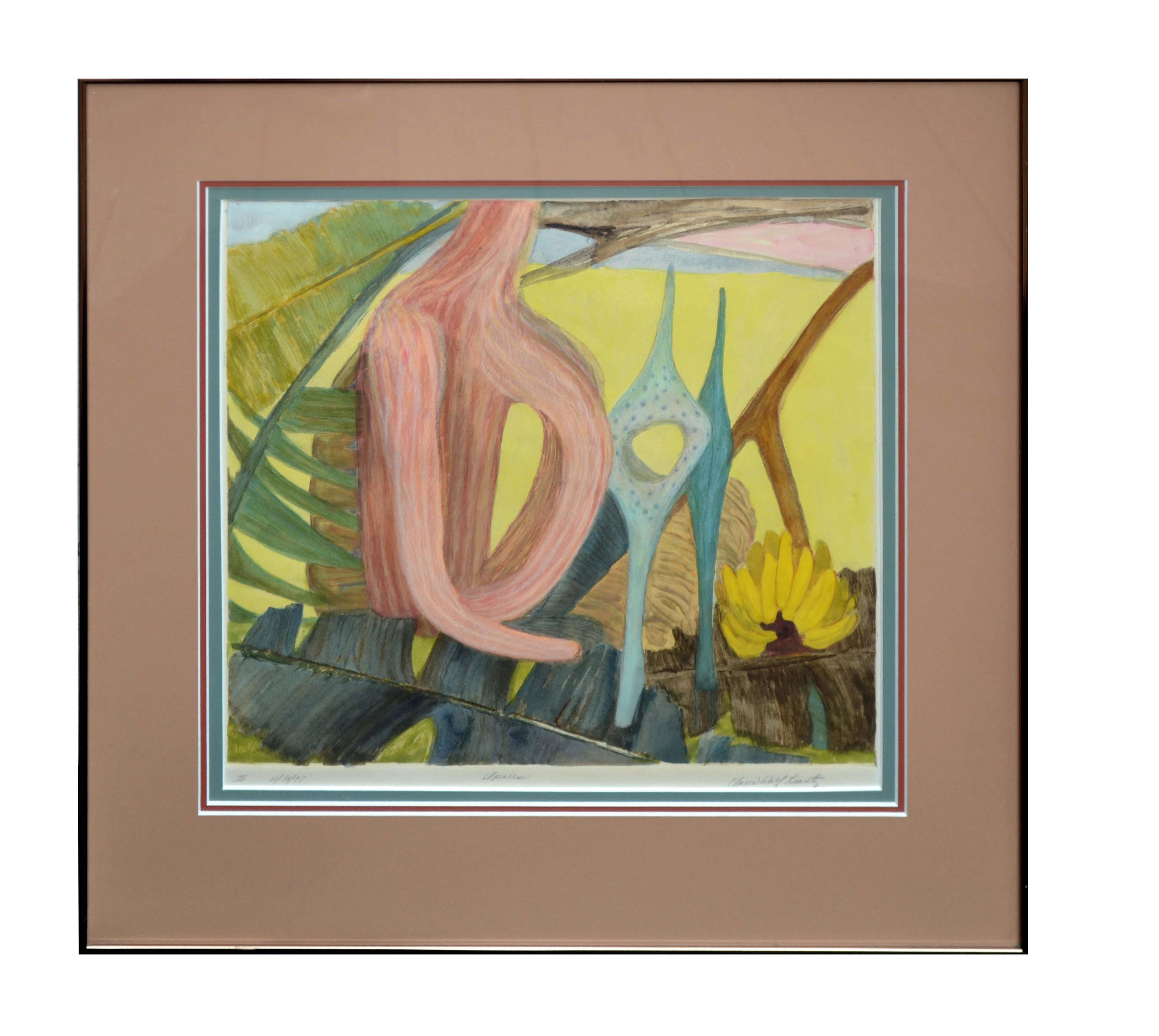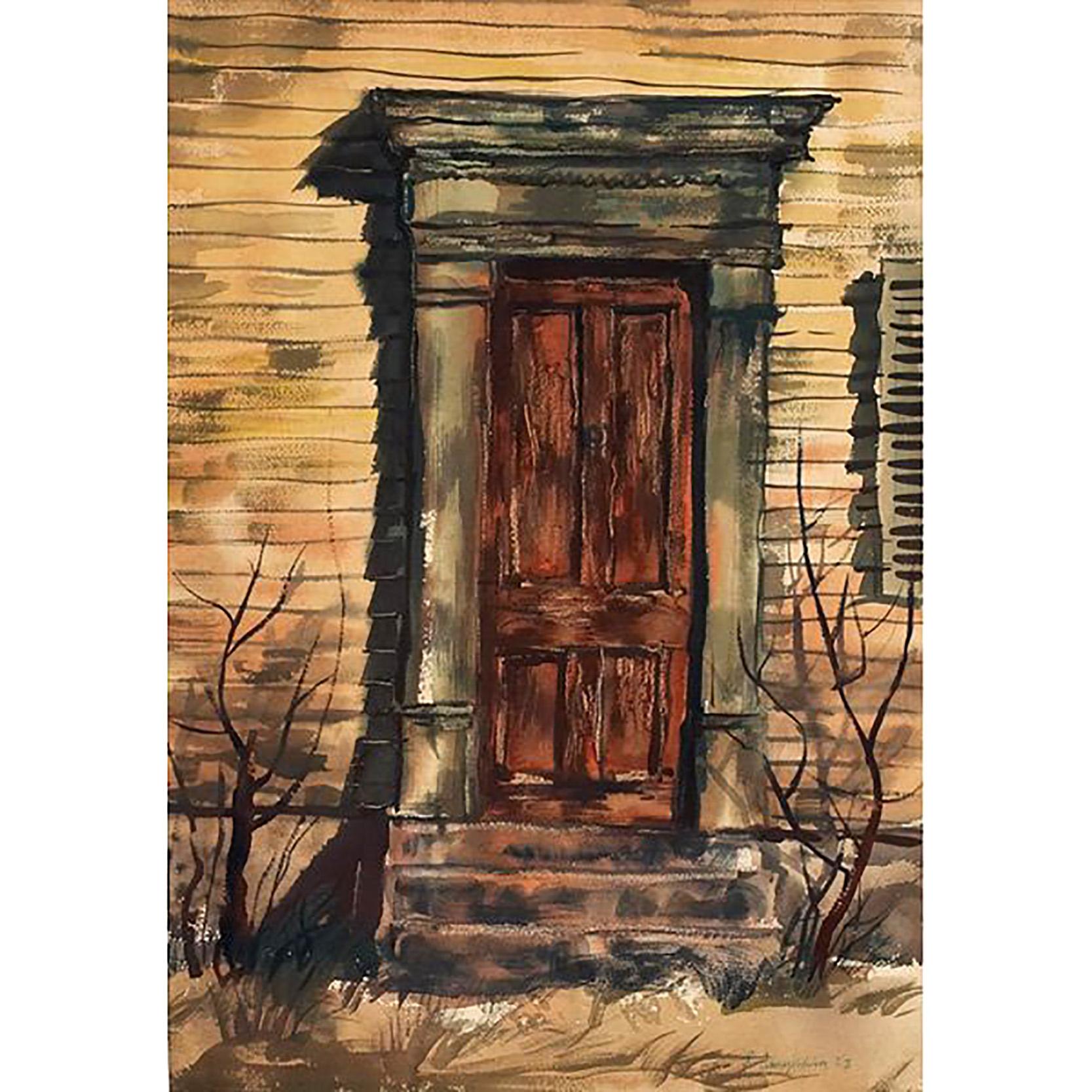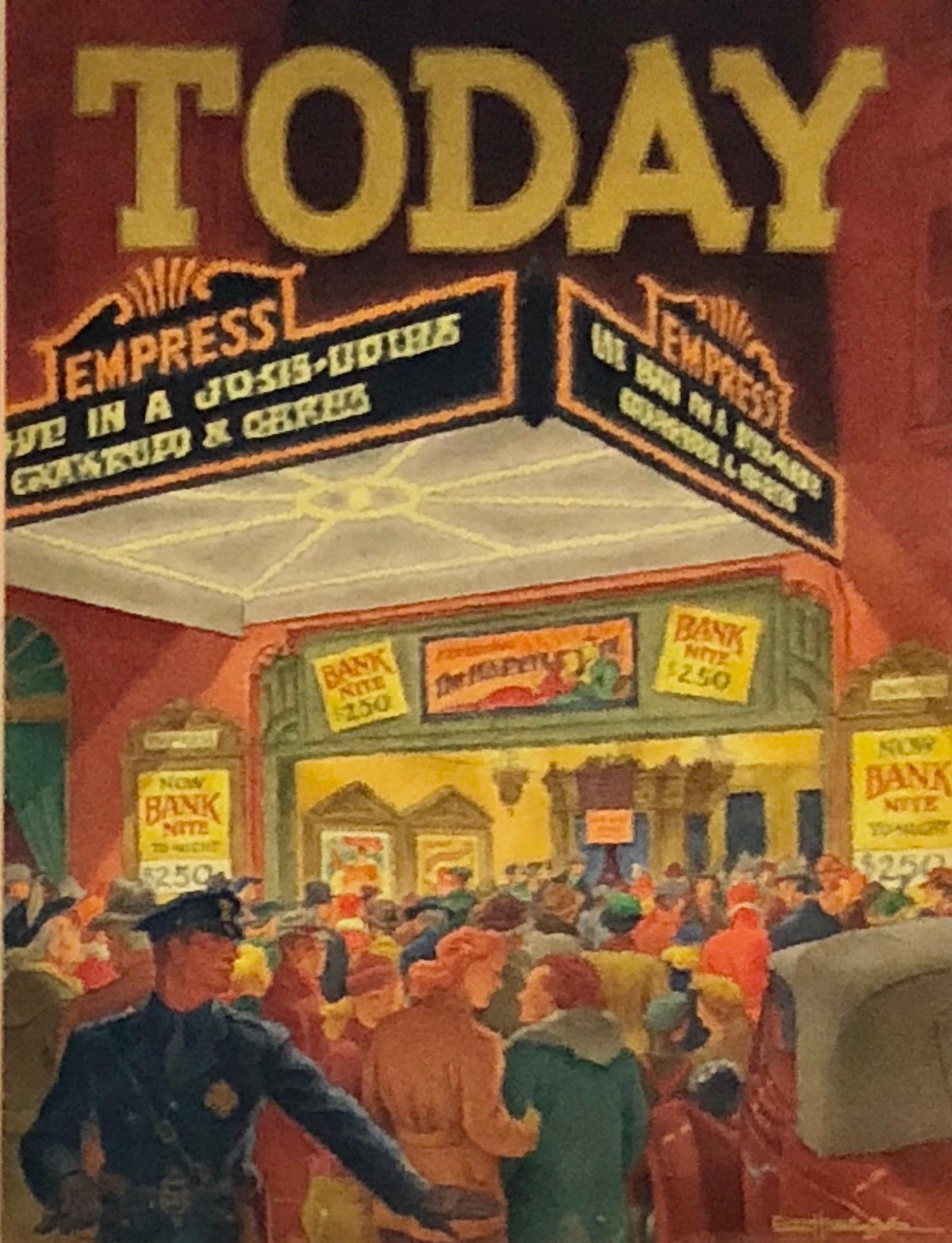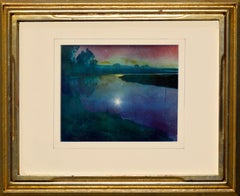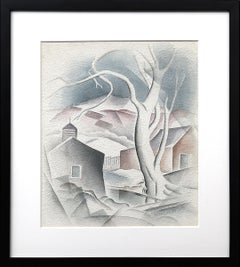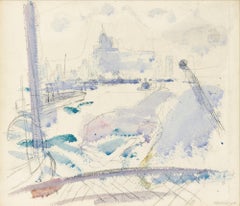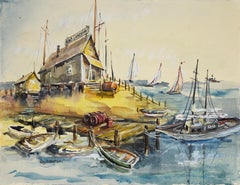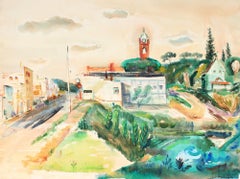
"Minnesota" 1955 Lush Green Watercolor Landscape
View Similar Items
1 of 5
David Landis"Minnesota" 1955 Lush Green Watercolor Landscape
About the Item
- Creator:David Landis (1964)
- Dimensions:Height: 18.75 in (47.63 cm)Width: 24.75 in (62.87 cm)
- Medium:
- Movement & Style:
- Period:
- Condition:Minor wear.
- Gallery Location:San Francisco, CA
- Reference Number:Seller: 823031stDibs: LU29827653582
Authenticity Guarantee
In the unlikely event there’s an issue with an item’s authenticity, contact us within 1 year for a full refund. DetailsMoney-Back Guarantee
If your item is not as described, is damaged in transit, or does not arrive, contact us within 7 days for a full refund. Details24-Hour Cancellation
You have a 24-hour grace period in which to reconsider your purchase, with no questions asked.Vetted Professional Sellers
Our world-class sellers must adhere to strict standards for service and quality, maintaining the integrity of our listings.Price-Match Guarantee
If you find that a seller listed the same item for a lower price elsewhere, we’ll match it.Trusted Global Delivery
Our best-in-class carrier network provides specialized shipping options worldwide, including custom delivery.You May Also Like
"Elkhorn Slough" - Cyanotype / Watercolor Landscape
By Cheryl Trotter
Located in Soquel, CA
Soft watercolor accents add to the beauty of this cyanotype and watercolor titled "Elkhorn Slough" by Cheryl Trotter (American, 20th century), c.1980's....
Category
1980s American Modern Mixed Media
Materials
Watercolor, Laid Paper, Photographic Paper
1930s Colorado Modernist Landscape Painting of Trees, Mountains & Houses
Located in Denver, CO
Colorado Modernist landscape, watercolor on paper by Turner B. Messick (1878-1952) from 1938. Tree with houses and mountains in the background, pain...
Category
1930s American Modern Landscape Paintings
Materials
Archival Paper, Watercolor
"New York from the Ferry" John Marin, American Modernism Watercolor, Cityscape
By John Marin
Located in New York, NY
John Marin
New York from the Ferry, 1914
Signed and dated lower right
Watercolor and graphite on paper
11 x 12 3/4 inches
Provenance:
An American Place, New York
Kennedy Galleries, Inc., New York
Christie's, New York, March 16, 1990, Lot 278
Private Collection (acquired from the above)
Sotheby's New York, American Paintings, Drawings, & Sculpture, October 2, 2014, Lot 10
A major figure in early twentieth-century modernism, John Marin captured the colliding energies of the American urban scene and the vibrant contrasts of natural elements in the coastal landscape of Maine and other countryside locales. As one of the premier watercolorists of his era, Marin developed a light, spontaneous style ideally suited to conveying the freshness and flux of city and country experience -- his watercolors are often considered to match in strength those created by Winslow Homer in previous century. At the same time, Marin's sensitivity to mass, form, color, and line and their dynamic interchanges provided a precedent for the Abstract Expressionist movement of the late 1950s.
Marin was born in Rutherford, New Jersey, to a family of European descent. After studying mechanical drawing and mathematics for half a year at the Stevens Institute of Technology in New York, Marin worked as a draftsman for several architects. It was not until he was almost thirty years old that he began to study art. He enrolled at the Pennsylvania Academy of the Fine Arts in Philadelphia from 1899 to 1901, and at the Art Students League in New York from 1901 to 1903, where his teachers were William Merritt Chase and Frank Vincent Dumond. While Marin was attending the League, the radical ideas of Arthur Wesley Dow were being disseminated and had an impact on the direction Marin would soon take in his art.
Marin left for Europe in 1905. The next five years, which he spent abroad, were of tremendous importance to his career. He became a significant figure in the expatriate community in Paris, frequenting the Dôme, a café that served as a meeting place for artists and writers. While in Europe, Marin visited the Louvre and the Rijksmuseum in Amsterdam and, despite his claims that he had been indifferent to the Paris art world, he undoubtedly became aware of the art of Paul Cézanne and Henri Matisse. The works Marin created in Europe most strongly reflect the influence of James McNeill Whistler, especially the pastels he rendered in Venice.
In the summer of 1909, Marin met Alfred Stieglitz in Paris. In February of the next year, Marin's work was shown along with that of Alfred Maurer at Stieglitz's gallery, 291. After returning to America in the following year, Marin became one of the most consistent members of Stieglitz's inner circle, showing at all three of his galleries -- 291, The Intimate Gallery, and An American Place. After 1910, Marin developed the routine that he would follow for the rest of his life, creating paintings, drawings, and prints in New York City and surrounding areas during the winter, and in the summer, traveling to the country, where he focused on the particular characteristics of the regions that he visited. He worked mainly in watercolor until 1928, when he began also to use oil.
Marin never became purely abstract. He formulated a unique style melding influences of the art of the French Fauves, Cézanne, Matisse, and the French Cubists with a personal style of luminescent colors, agile brushwork, and a simultaneously delicate and strong handling. In city views, he used broken lines, a light touch, fluid color, and rhythmic compositions to convey what he described as the "great forces at work." He expressed the warring of the great and the small through relationships between masses. As he said, he sought to express the "pull forces" of the modern urban scene. Often portraying the new tall buildings of New York seen...
Category
1910s American Modern Landscape Drawings and Watercolors
Materials
Paper, Watercolor
Lou's Landing - Original Watercolor On Paper
Located in Soquel, CA
Lou's Landing - Original Watercolor On Paper
Original watercolor on paper by Ray Skelton (American 20th c.), depicting a boat harbor with numerous boats tied up, some sailing. Lou's...
Category
1960s American Modern Landscape Drawings and Watercolors
Materials
Paper, Watercolor
1930s American Farm Scene, Landscape Watercolor Painting Farm Buildings Windmill
By Samuel Bolton Colburn
Located in Denver, CO
Original watercolor on paper painting by Samuel Bolton Colburn (1909-1993) of a small farm situated in a valley near the mountains. Presented in a custom frame, outer dimensions meas...
Category
1930s American Modern Landscape Drawings and Watercolors
Materials
Paper, Watercolor
Mid Century "Napa Valley Landscape" Watercolor Painting
By Frederick Pomeroy
Located in Arp, TX
Frederick Pomeroy
"Napa Valley Landscape"
c. 1960s
Watercolor on paper
17"x14" brown wood frame float mount over linen mat
Signed in paint lower ...
Category
1960s American Modern Landscape Drawings and Watercolors
Materials
Watercolor, Archival Paper
